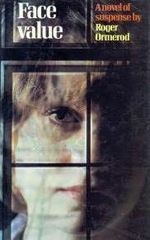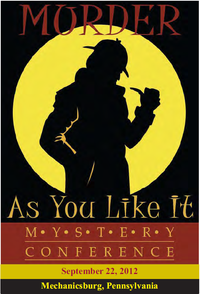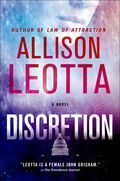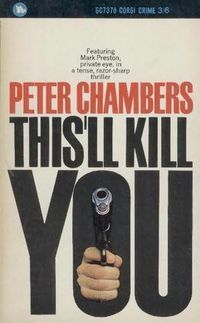B.V. Lawson's Blog, page 237
September 28, 2012
Friday's Forgotten Books - The Hanging Doll Murder (Face Value)
This is a "classic" FFB from the archives:
 It's amazing that Roger Ormerod, a native of Wolverhampton,
It's amazing that Roger Ormerod, a native of Wolverhampton,
Staffordshire, managed to end up as writer, given his
background. Born in 1920, he worked various jobs, including postal
worker, shop loader in an engineering factory, clerk in county court,
inspector for Department of Social Security, and lists his hobbies as
amateur tailoring, wine making, stereo photography and high fidelity.
But
somehow in the middle of that, he wrote some 22 standalone crime
novels: four novels in a series featuring Philipa Lowe and Oliver
Simpson; 16 books in a series featuring private detective David Mallin;
and 11 in his Richard and Amelia Patton series, a total of 53 books, all
penned between 1974 and 1998.
His interest in crime fiction began with Sherlock Holmes stories in Savoy
magazines he discovered at his grandmother's house which started him on
his path to writing, which went basically nowhere...until what he
called a "freak acceptance" of his first TV play as his first sale,
which landed an agent who said he wrote better novels. The first of
those, Time to Kill, featuring P.I. David Mallin, was published
when Ormerod was 54. He once said about his writing philosophy: "I am
principally interested in human motivation in respect of crimes, rather
than the mechanics of them. My main intention is to entertain rather
than to instruct."
Ormerod's creation Detective Inspector
Richard Patton is known as a maverick and a pain in the neck by his
superiors, who flouts regulations and won't follow orders, which is why
they're relieved when he decides to take early retirement. At the start
of The Hanging Doll Murder (published in the UK as Face Value),
Patton is due to retire in three days. But he's surprisngly ambivalent
about the move, especially when the sadistic Clive Kendall, a
child-rapist whom he'd jailed years before, is released from prison.
Retirement seems even less likely when Patton faces yet another loose
end relating to the Kendall case, the husband of Amelia Trowbridge,
who's gone missing and whose burned-out car is discovered in a ravine.
As Patton navigates around the clues, including a hanging doll with a
goatee beard, the case becomes even more personal when he finds himself
getting too close to the prime suspect—Amelia.
Trevor Royle, in the St. James Guide to Crime and Mystery Writers,
summarized Ormerod's writing style as having a "nonchalance . . .
reminiscent at times of Raymond Chandler. As well as realism of
background, Ormerod's writing is notable for its terse and natural
dialogue and for an ability to switch the direction of the narrative."
Ormerod has also received positive reviews for his characterizations and
insights into complex human relationships and motivations, as in this
excerpt, musings from Patton:
That
Sunday had been my last rest-day in harness, so I'd decided to treat it
as a trial run for all my glorious days of freedom ahead. I'd rolled
out of bed. A new day. Tra-la! But it hadn't lasted long. After
breakfast, the grey day had seemed insupportable indoors, and all I had
to fall back on was the same old routine. It had therefore occurred to
me to drive out into the country and dicker around with a couple of
minor issues. But Brason had to go and upset the equilibrium by offering
interest, and Ted Clayton had presented a clear line of action I wasn't
going to be in a position to carry through. It left me tense, my mind
racing, and staring out at the wind-blown drifts of heavier flakes past
my window. Like my life, I thought in disgust, colourless and
insubstantial, and blowing past.
One criticism of Ormerod's work may be what Reginald Hill of Books & Bookmen called an unnecessary twisting and twisting at the tail of Face Value
"till the whole thing was bent out of shape." In fact, Ormerod is known
for his labyrinthine plots and deep barrel of clues, and by the time he
does wind down the denouement, there might be a touch of "it's about
time," but all in all, The Hanging Doll Murder is a solid
procedural with a pinch of psychological and suspense genres thrown in.
Trevor Royle wasn't far off in calling Ormerod "one of Britain's best
traditional crime writers."





September 27, 2012
Banned Books Week

Banned Books Week: Celebrating the Freedom to Read kicks off this Sunday, September 30, and runs through October 6. During the event, hundreds of libraries and bookstores around the country will draw attention to the problem of censorship by mounting displays of challenged books and hosting a variety of events. Since the first Banned Books Week in 1982, more than 11,300 books have been challenged, with 326 challenges reported to the Office of Intellectual Freedom in 2011. Readers from around the world are also participating in the Banned Books Virtual Read-Out by creating videos proclaiming the virtues of the freedom to read that are featured on a dedicated YouTube channel (last year's videos can be found here). Check out the website to see if there are any events listed near you, or check with your local bookstores and library for more details.





September 25, 2012
Mystery Melange

Book Igloo by Miler Lagos
Tickets are still available for the Private Eye Writers of America Shamus Banquet in Cleveland during Bouchercon on Friday night, October 5. Tickets are a steal at $60 for dinner, a cruise, and awards. Email Bob Randisi at RRandisi@sbcglobal.net for tickets and details. (Hat tip to James Reasoner for the reminder.)
Author Marcus Sakey is teaming up with the Team Julian Foundation, a not-for-profit that raises research funds for childhood cancer, to raise money through e-book sales of his story collection, Scar Tissue (available at Amazon). During the month of September, Pediatric Cancer Awareness Month, 100% of the proceeds will go directly to the Team Julian Foundation.
A new story is up at Beat to a Pulp, titled "Too Many Crocketts" by Evan Lewis, who talks about the genesis for the story on his blog.
Poisoned Pen Press is starting a new imprint just for young adult crime fiction, titled The Poisoned Pencil. They are looking for manuscripts between 45,000 and 90,000 words with a protagonist between 12 and 18. All the submission details are on the publisher website.
An Agatha Christie essay from 1945 praising British crime fiction will be published for the first time. The Wall Street Journal placed the essay in context and how it was written at a time when hardboiled fiction a la Raymond Chandler was dominating American crime fiction, and British Golden Age detective fiction was under attack.
The Q&A roundup this week includes Aldo Calcagno, editor of online zines Powder Burn Flash and Darkest Before the Dawn; Australian-born author Michael Robotham talks with the Crime Fiction Lover blog about his latest thriller featuring psychologist Joe O’Loughlin and former cop Vincent Ruiz; and Sons of Spade chats with British author Keith Dixon about his Sam Dyke series.





September 24, 2012
Fall for the Book

The 14th annual Fall for the Book Festival at George Mason University starts tomorrow and lasts through Sunday, September 30th. As part of this year's event, the Mid-Atlantic Chapter of Mystery Writers of America is sponsoring the Mason Award presentation to Neil Gaiman, creator and writer of the DC Comics series Sandman and author of the bestselling novels American Gods, The Graveyard Book, and Coraline. In addition, Michael Chabon, author of the Pulitzer Prize-winning The Amazing Adventures of Kavalier & Clay and The Yiddish Policeman's Union, will receive this year’s Fairfax Prize honoring outstanding literary achievement.
Individual author events include sessions with crime fiction authors John Gilstrap, Will Lavender, and Laura Lippman. A Mid-Atlantic Chapter of Mystery Writers of America panel moderated by Alan Orloff will include authors Tracy Kiely, Thomas Kaufman, Sandra Parshall, and Joanna Campbell Slan. A trio of first-time novelists will take the stage to discuss their debut political thrillers, including defense anthropologist Alexandra Hamlet, U.S. Naval Academy grad Kathleen Toomey Jabs, and Mark Harril Saunders.
Another highlight of the festival for fans of crime fiction will be the panel "On Literary and Genre Fiction" on Sunday from 1:30 to 3:00 p.m. The National Book Critics Circle hosts a discussion of literary fiction and genre fiction, asking the questions, What's the difference? What's the divide? Where's the overlap? Weighing in on these topics are novelist Julianna Baggott, whose latest novel, Pure, ventures into the realm of post-apocalyptic horror; Louis Bayard, whose literary mysteries include The School of Night; Alma Katsu, author of The Taker and The Reckoning; and journalist and critic Laura Miller, author of The Magician's Book: A Skeptic's Adventures in Narnia.





Media Murder for Monday
 MOVIES
MOVIES
New Line has bought Spy Guys, a spy-action-comedy described as " Ocean’s 11 meets Mission: Impossible," in which a CIA agent is framed and becomes an enemy of the state while attending a friend's wedding in Europe.
A movie project titled The Prototype, based on a short film, is being developed by FilmNation Entertainment. It centers around an experimental drone soldier being hunted by the FBI’s elite Critical Incident Response Group after it escapes from a top-secret military base and goes on the run.
Academy Award-winning actress Melissa Leo has joined the cast of Prisoners, based on a screenplay by Contraband writer Aaron Guzikowski. It follows a small town carpenter named Keller (Hugh Jackman) who takes the law into his own hands when police can't find his kidnapped daughter, putting him on a collision course with a detective assigned to the case.
TV
Homeland was a big winner in the 2012 Emmy Awards handed out last night, picking up nods for Best Drama and Best Actress (Claire Danes), Best Actor (Damian Lewis), and Best Writing (Alex Gansa, Howard Gordon & Gideon Raff). Aaron Paul also won Best Supporting Actor in a Drama for his role in Breaking Bad, and Tim Van Patten won the Best Director Award for Boardwalk Empire.
As Omnimystery News notes, tonight sees the premiere of the third season of Hawaii 5-0 and the fifith season of Castle, as well as the second episode of the eighth season of Bones.
Sopranos star James Gandolfi may to return to television in the pilot Criminal Justice, a New York-set crime drama loosely based on the BBC series of the same name created by Peter Moffat.
Homeland producer Howard Gordon has sold a supernatural police procedural drama to Fox, titled Vigilant. It follows a social outcast in her 20s who creates a vigilante persona to tackle police and government corruption.
Fox is also developing a modern take on Hamlet, titled America’s Son, which is "part juicy soap, part paranoid political thriller." The plot follows a renegade JFK Jr. type who returns home to D.C. after his presidential-hopeful father's fatal car accident to discover the death was no accident, and makes it his mission to avenge the murder.
FX has given the green light to an untitled project from playwright/screenwriter Stephen Belber, which is a New York-based thriller chronicling a murder and cover up
The CW has an intriguing project in development that is an updated version of Alice in Wonderland in which an adult Alice is a police detective who discovers a hidden world just beneath the surface of the Los Angeles streets.
PODCASTS
This isn't a podcast but rather an online video that's a lot of fun. Fabrice Mathieu produced a mashup of 50 classic noir films and works them around an original premise: what if our shadows had independent existences? All of this in only 7:47.
Another interesting online video comes from Open Road Media, with authors like Joseph Wambaugh and Ken Bruen talkng about their previous jobs in "Writers Before They Were Writers."





September 20, 2012
Author R&R with Dorian Paul
 I'm taking a break this week from the regular Friday's "Forgotten" Books feature to take some Author R&R (Research and Reference) with Dorian Paul, a/k/a Dorrie Parini and Paul LaFerriere, author of the biological thriller Risking
I'm taking a break this week from the regular Friday's "Forgotten" Books feature to take some Author R&R (Research and Reference) with Dorian Paul, a/k/a Dorrie Parini and Paul LaFerriere, author of the biological thriller Risking
the World. Dorrie and Paul have always finished each other's
sentences and shared an entrepreneurial passion. For nearly three decades they have
worked with Fortune 500 pharmaceutical and biotech companies to explain
breakthroughs in genetic engineering, immunology, cancer research and many
other areas. Dorrie has a BS in English and Biology and an MA in English (Penn
State) with advanced courses in science writing. Paul has a BS from Amherst
College where he studied English and Mathematics.
From Dorrie and Paul:
 As our world advances, so do our
As our world advances, so do our
chances of coming up against catastrophic disaster and every new cure has the
potential to turn deadly. Ancient agents – the bubonic plague, smallpox, and
botulism – lie dormant in laboratories, ever ready to emerge in new,
potentially bioengineered forms. This is how the stage has been
set in Risking the World.
The heroine, American scientist
Claire Ashe, finds herself thrust into the middle of a massive terrorist plot
not even the global intelligence community is prepared for. The terror plot at
the heart of Risking the World
revolves around a rapidly lethal bioengineered form of tuberculosis designed to
purposely infect kids. The science used
to foil the horror is not only plausible, but the technology has already garnered
Nobel prizes.
Risking the World is a biological thriller. For starters, that meant we had to get the
science right for it to be plausible enough to grip and hold the reader.
On that
score we had a leg up, because we'd worked together to build a science writing
company of 100+. We'd interviewed
experts who developed cutting edge medical advances, and knew from experience
how to sift through peer-reviewed journals to find articles with a spark of
originality and promise. So, the
research tools were familiar to us.
The
challenge lay in using those tools to pluck the very best from the published
research, and extend that knowledge into unknown realms. Our aim was to create a fictional world in
which all the science we described was real, but the terrifying ways in which
it was put to use had yet to be seen.
Selecting
the right disease for our bio-threat was our first and most central research
question. We put aside writing about a
biological agent everyone's already heard of, like anthrax or plague, as old
hat. Instead, we looked for a disease
that our readers would recognize—but not think of as dangerous.
Tuberculosis
had much to offer. Book lovers might
recognize it as the disease that killed John Keats, and some might even know
that George Orwell used the royalties from 1984
to import streptomycin for his TB treatment. While these historical examples echo a
distant past, not a dangerous present, the current situation is not at all
rosy. TB ranks second only to HIV/AIDS
as the cause of death from infectious disease globally, and the WHO estimates that
as of 2010 nearly one-third of the world's population was infected with TB.
Fortunately,
most of these individuals have a latent (dormant) form of this slow growing
disease. But what if an evil genius were
to discover what our leading researchers have yet to elucidate – the secret to
the switch that turns TB's reproduction cycle on and off? Could the good guys who are investigating
protein kinases and messenger molecules be on the right track, but a step
behind the bad guys? And what if those
bad guys succeed in bio-engineering an explosively lethal form of TB that kills
just about every young kid exposed to it?
Now the
scientists in our novel who wear the white hats must play catch up, big time. The heroine, Claire Ashe, is an
immunobiologist who's spent her budding career trying to uncover the
reproductive secrets of TB in hopes of developing a viable vaccine. She's leading the team tasked with finding an
antidote to the deadly TB strain created by the man who solved the scientific
puzzle she failed to unravel – and used the knowledge to kill rather than cure.
Why
choose a brainy female as our heroine? Because we believe in promoting women in
science. You might not know this, but
even though women represent about 60% of college graduates in the U.S., men
represent about 60% of those in science.
Since women are over 50% of the U.S. population, it's time we took
advantage of all the female brainpower out there to keep our science position
in the world. Unbelievably, a UNESCO
report indicates 13 Muslim countries produce a higher percentage of women science
graduates than the U.S.
We'd
served with women like Claire on deadline driven international teams, so we
knew what she was up against as team leader.
This allowed us to populate our pages with a group of the best and
brightest – and endow them with appropriately cantankerous personalities. But the scientific team assembled in Risking the World needed to be equipped
with the right weapons to fight back – and nanotechnology fit the bill.
Nanotechnology
has garnered multiple Nobel prizes in recent years. It refers to techniques in which scientists
manipulate matter on the atomic and molecular levels to create wholly novel
structures not found in nature. Whoa,
you say, that sounds scary. Except, of
course, it's not at all scary to the scientists involved, who've named one of
their earliest creations 'Bucky Balls' after Buckminster Fuller, the inventor
of the geodesic dome. But Bucky Balls
become scary to Claire Ashe when she sees how her nemesis has used them.
Of
course, we've only touched on the science research here, but other research was
required for our villain, whose motivation lay within the world of the
personal. Even while plotting to unleash
his TB bioweapon on children in Paris, London Tel Aviv, and New York, he
remains obsessed with reconstituting his grandfather's antique weapon
collection, which was confiscated after he was murdered when the Shah of Iran
was deposed. Research relating to this
weapon collection came from the epic Persian poem, Shahnameh, as well as
collections detailed in books and visited by us at the Wallace Musuem in
London.
In the
age of the crusades, European armorers struggled to create swords that could
stand up against the watered steel blades forged by their Persian foes. In Risking
the World, evil scientists use nanotechnology to create a protective shell
for their lethal TB. Claire's team,
seeking a cure, uses it to penetrate those defenses. Scientists such as Claire
are the modern day armorers, waging war at the molecular level on our behalf.
We hope
you take a risk on Risking the World
by Dorian Paul. It is available through
Amazon.com as an eBook and trade paperback.
For more information about us, and the science behind Risking the World, visit our website at
www.dorianpaul.com.
Risking the World
is available in print and ebook format from Amazon.com. Your purchase of Risking the World helps support TB research via contributions by Dorian Paul, who donates a portion of the revenue from book sales to organizations fighting this deadly disease.





September 19, 2012
Murder As You Like It
 This Saturday, the Mechanicsburg Mystery Bookshop is sponsoring Murder As You Like It, an annual event that this year includes 17 mystery authors participating in panel discussions, workshops and book signings. The day's activities begin at 9:30, and the minimal registration fee includes lunch, handouts, discounts on books sold at the conference and more.
This Saturday, the Mechanicsburg Mystery Bookshop is sponsoring Murder As You Like It, an annual event that this year includes 17 mystery authors participating in panel discussions, workshops and book signings. The day's activities begin at 9:30, and the minimal registration fee includes lunch, handouts, discounts on books sold at the conference and more.
Panels include everything from "It's a Whole Different World" about fictional settngs, to "Revealing the Mysteries of Publishers," to "Where Do Mystery Plots Come From?" Some of these are geared toward writers, some toward readers, and some are suitable for anyone and everyone who's interested in crime fiction. There are also two workshops, one for adults and one for kids ages 6-10. For more information, check out this flyer or their Facebook page.





September 15, 2012
Author R&R with Allison Leotta
 Throughout the year, IRTM's "Author R&R" (Reference and Research) feature has profiled authors giving insights on how they conduct research for their novels, with some varied and interesting responses. (You can find them in the Authors section of this blog, here.) Today, it's the turn of former federal prosecutor Allison Leotta, whose new novel, Deception, follows Assistant U.S. Attorney Anna Curtis and her investigation into a murder linked to a Congressman and a high-end escort service.
Throughout the year, IRTM's "Author R&R" (Reference and Research) feature has profiled authors giving insights on how they conduct research for their novels, with some varied and interesting responses. (You can find them in the Authors section of this blog, here.) Today, it's the turn of former federal prosecutor Allison Leotta, whose new novel, Deception, follows Assistant U.S. Attorney Anna Curtis and her investigation into a murder linked to a Congressman and a high-end escort service.
Leotta obviously doesn't have to dig too deep into the research well to find material for her books and to get the details just right, but she passed along some hints that may help others:
"For twelve years, I was a
federal prosecutor in D.C., where I specialized in sex crimes and domestic
violence. I now write novels about –
surprise! – a fictional prosecutor in D.C. who specializes in sex crimes and domestic
violence. I find inspiration for my
plots from the real cases I handled, and I use details drawn from the most
fascinating things I’ve seen.  My most recent book, Discretion,
My most recent book, Discretion,
is about a political sex scandal and murder investigation that ensues after a
high-priced escort is killed in a congressman’s Capitol hideaway. I based many of the details on the real “D.C.
Madam” case and New York’s “Millionaire Madam.”
You can make your story sparkle with authentic details even
if you’ve never made a closing argument or walked a beat. Here’s how:
1. Enroll in a Citizens Police Academy.
Many police stations have whole seminars devoted to teaching
citizens about police methods for
solving and preventing crime. My
local police station here in Montgomery County, MD, has a whole 18-week
course. Check with your local
police stations to see what they offer.
2. Tour your local police facility.
Even if they don’t have a Citizens Police Academy, many
police stations offer the public the opportunity to visit the station and tour
the facilities. Some even offer tours of
the coroner’s office or crime lab. You’ll see the kind of details you simply cannot get anywhere else.
3. Do a ride-along.
Many police stations will allow you to sit in a marked
cruiser while a patrol officer does his shift.
Watch and ask questions. This is
a wealth of how-to information. Follow
up with a thank-you note to the officer (even better: cookies), and you may
have a police source for the rest of your life.
4. Visit a courthouse, watch a trial.
Trials are public, and they can be good entertainment in
addition to a wealth of information. Go
for a specific trial, or simply poke your head into a bunch of different
courtrooms. Each one will have its own
ambiance. Some courtrooms are cattle
calls of a dozen misdemeanor cases, while others may be holding a major
homicide trial or a multi-defendant federal racketeering case. You’ll get a sense for how lawyers ask
questions, how witnesses answer, and how the courtroom feels.
5. Check your terms.
Are your fictional lawyers in District Court, Circuit Court,
or Superior Court? In New York, the main trial court is confusingly called the
Supreme Court, while highest court is the Court of Appeals. A writer unsure of terminology can call the
court, check its website, or consult the National Center for State Courts
website (www.ncsconline.org), which
lists the structure and names of all state courts. Another trick: call a law
professor in the story state.
6. Read the local papers.
Once you’ve chosen the jurisdiction where your story is set,
read the local papers for that area. You’ll quickly get a sense of the terminology for that
jurisdiction. The stories also reveal
local quirks that give a story a sense of place and realism.
7. Check out books on criminal law.
An excellent book on getting the legal details right is
Leslie Budewitz’s Books, Crooks &Counselors: How to Write Accurately About Criminal Law and
Courtroom Procedure. It won an Agatha
last year and is a thoughtful, easy-to-understand how-to manual.
8. Walk your city.
Go behind the scenes, beyond the parts you’d see on a bus
tour. Touch the pavement and see the streets you’re writing about. Visit the real places where your scenes are
set. Ask for a tour of places where you
might set scenes. When organizations
hear that you’re a novelist, they’re often happy to chat with you and get the
free publicity.
9. Talk to people.
Know a lawyer or police officer? Ask her about your scene. Don’t know one? Most police stations have a public relations
branch that will put you in touch with someone who can answer your
questions. Most cops and prosecutors
love telling war stories. Be respectful,
ask questions, follow up with thankful emails. You may find you have more stories than you can use.
Also, strike up conversations with people you wouldn’t
normally chat with. That guy with the
pierced nose and mohawk has a different take on life than you. Talk, ask questions, really listen to the
answers. Get to know where he’s coming
from, and what makes him tick. Then use what you’ve learned to create your
characters and make them real.
10. Use the Internet
There’s nothing like the experience of actually being in the
real place you’re writing about. But if
you just can’t make it there, you can find information online covering topics
including police terminology, forensics, government sites, and guns. Here are a couple sites that have a great
database listing lots of different sources:
Internet Research Resources for Mystery and Crime Writers
The Blood-Red Pencil: Exploring Web Resources for Crime
Good luck and have fun!"





Media Murder for Monday
 MOVIES
MOVIESLionsgate has acquired film and TV rights to Timothy Hallinan's "Junior Bender" crime fiction book series about a Los Angeles burglar who moonlights as an ad hoc private eye for clients on the wrong side of the law.
Robert Connolly is set to direct the film adaptation of The Shipkiller, the novel by Justin Scott. Connolly called the source material "an extraordinary novel that was almost made in 1979 with Sean Connery and David Niven. Ever since seeing Phillip Noyce's terrific Dead Calm, I had wanted to find the perfect thriller at sea and this is surely it."
Nicholas Cage is teaming with Emmett/Furla Films for the crime thriller I Am Wrath, scripted by Paul Sloan. Based on a story by Yvan Gauthier, the plot follows a man whose wife has just been murdered, finds rampant corruption within his local police force and takes matters into his own hands.
Adam Wingard will direct and Simon Barrett will rewrite the first draft of Dead Spy Running, a film project based on the series of novels by Jon Stock. The plot follows Danny Marchant, a young DJ forced to go on the run with a beautiful secret agent after he's framed for the murder of his father, an MI6 agent.
Elizabeth Banks has been added to the film adaptation of Laura Lippman's novel Every Secret Thing. Banks joins Diane Lane, who has already been cast. (Hat tip to Omnimystery News.)
The first official stills from the movie Broken City have been released. The film, which is scheduled for release in January 2013, is based on a screenplay by Brian Tucker and follows Billy Taggart (Mark Wahlberg), a former cop who is hired to tail the cheating wife (Catherine Zeta-Jones) of the city's corrupt mayor (Russell Crowe), a path that leads to murder.
TV
The USA Network ordered a pilot from the Elmore Leonard short story collection When the Women Come Out to Dance. The plot is said to be about a Miami businessman and politican-wannabe who marries a Columbian woman with a troubled past who proves to be resourceful at "fixing" any problem the corrupt, South Miami political scene throws at her husband.
The young British actor Freddie Highmore has been cast to play Norman Bates opposite Vera Farmiga in in A&E's upcoming series Bates Motel, a prequel of sorts to Alfred Hitchcock's classic Psycho.
A&E has ordered a pilot for Occult, a crime drama in which an FBI agent is paired with another agent, who specializes in the occult.
A&E has also ordered a fourth season of the drama The Glades, starring Matt Passmore as Jim Longworth, a cocky detective that relocates to a small town in Florida after a scandal forces him to leave Chicago.
Fox bought a script commitment for a drama titled The Prodigy, centering on a young CIA officer who has to infiltrate the New York City field office of the FBI on the hunt for agents who are working with enemies of the U.S.
USA Network released a video trailer for its new series Graceland, which follows a group of diverse agents (from the DEA, FBI and U.S. Customs) forced to live together in an undercover beach house in Southern California.
Fans of Foyle's War may have to wait until summer 2013 for the new season on PBS, but Acorn Media has released a few images from the production to tide you over. World War II is over, and Christopher Foyle steps into his new role as a Senior Intelligence Officer, only to discover that the British establishment is rife with communist sympathizers and traitors. (Hat tip to Crimespree.)
PODCASTS
The most recent Suspense Radio show featured the writing team of Gary Williams and Vicki Knerly, talking about the journey through the publishing world and their latest release, and also authors R. Barri Flowers and Sylvie Granotier.
THEATER
The critically-acclaimed play The Exonerated returns for a seven-week run starting Sept. 15 at the Culture Project in New York City. The production will again feature a rotating cast of stars, including Stockard Channing, Brian Dennehy and Brooke Shields, who read accounts by former death row inmates.





September 14, 2012
Friday's "Forgotten" Books - This'll Kill You
 British author Dennis John Andrew Phillips (1924-2006) served in the RAF during World War II, then turned to labor relations and worked as a musician—something he continued to do until right before his death, even recording a CD at the age of 80. He also wrote almost 60 novels between 1961 and 1992 under his own name and the pseudonyms Peter Chester, Simon Challis, Philip Daniels and Peter Chambers.
British author Dennis John Andrew Phillips (1924-2006) served in the RAF during World War II, then turned to labor relations and worked as a musician—something he continued to do until right before his death, even recording a CD at the age of 80. He also wrote almost 60 novels between 1961 and 1992 under his own name and the pseudonyms Peter Chester, Simon Challis, Philip Daniels and Peter Chambers.
However, it was the last pen name, Peter Chambers that brought the author most success, with 36 books in a series featuring private eye Mark Preston. (As a side note, 'Peter Chambers' is also the name of the fictional P.I. created by the better-known author Henry Kane.) The Mark Preston novels were set in the fictional town of Monkton, California, with its fill of sleazy night clubs, gangsters and racketeers.
In 1964's This'll Kill You, the obligatory attractive young female client appears, a woman named Dana Pallister. She has a mysterious background and two attempts have been made on her life, yet she doesn't want to involve the police. Preston's investigation leads him to an unsolved kidnapping twenty years earlier in which neither the baby girl nor ransom money were ever recovered. When a prisoner with ties to the kidnapping escapes from prison, people begin to die and Preston races against the clock to prevent more deaths, including his own.
From persuing the other Mark Preston titles, I gather most are built more on plot and less on setting and characterization. Many of the plots often sound interchangeable, too, with the damsel in distress leading Preston into trouble with both criminals and the law. This is pretty much what you'd expect from someone cranking out two or three of these a year, but even so, This'll Kill You is a rather breezy, entertaining read.
In the Foreword to the 1994 Black Dagger release of the novel, author Peter N. Walker notes that Chambers' central character, Mark Preston, has been favorably comapred to other giants in the genre, ranking alongside Hammett's Sam Spade and Chandler's Philip Marlowe. I'm not sure I'd go that far, but Preston is a likeable enough protagonist, and Chambers imbues him with a high moral code and a pointed sense of humor.
The author wrote 13 novels under the pen name of Philip Daniels, between 1979 and 1986, and these mostly standalones garner better reviews. Unfortunately, few of the author's works are in print with the exception of one or two reprints in the Black Dagger crime series.








